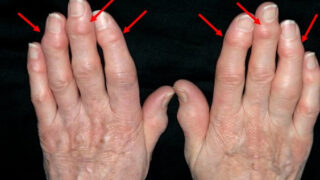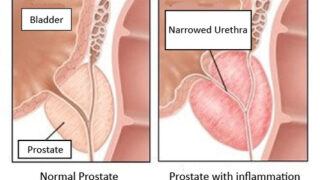Table of Contents
Q What is trochanteric bursitis?
Are you experiencing pain in your hip area that makes it difficult to walk or climb stairs? If so, you might be suffering from trochanteric bursitis, a painful condition that affects the small sacs filled with fluid near your hip joint.

Greater trochanteric bursitis is inflammation of the bursa (sack filled with lubricating fluid) around the bony bulge on the outside of the hip joint called the greater trochanter. Chronic pain mainly on the outside of the hip joint.
Greater trochanteric bursitis is called Trochanteric bursitis or Greater Trochanteric Pain Syndrome in English. Greater trochanteric bursitis occurs in 5 to 6 people out of 1,000 in the general population, and it is by no means rare, and the frequency is high. It is relatively common among women, the middle-aged, and elderly people.
What are the symptoms of trochanteric bursitis?
So, how do you know if you have trochanteric bursitis?
Keep an eye out for symptoms like pain in your hip area that can radiate down your thigh or buttock. This pain can be sharp or dull, and it may get worse when you walk or lie on the affected side. You might also feel stiffness or have difficulty moving your hip joint.
The causes of trochanteric bursitis
Trochanteric bursitis can be caused by a number of factors, including:
- Repetitive activities that involve the hip, such as running or climbing stairs.
- Direct trauma to the hip, such as a fall or injury.
- Trochanteric bursitis can occur due to a variety of reasons, such as poor posture or movements that strain the hip area.
- Medical conditions such as rheumatoid arthritis, gout, or psoriatic arthritis can also trigger this painful condition.
But fret not, whatever the cause of your pain, seeking medical advice is crucial to determine the root cause and get proper treatment.
Q Diagnosing trochanteric bursitis

When making a diagnosis, we will ask about your medical history, symptoms, and the trigger for the occurrence. In addition, trochanteric bursitis is suspected if symptoms appear when you lie down on your painful side, or when you stand up after sitting for a long time. A physical examination checks for tenderness by applying direct finger pressure to the greater trochanter. Also check your gait.
Getting an MRI is useful as an imaging test. X-rays often show no abnormalities.
MRI can detect slight inflammation of the bursa as shown in the picture above. However, if the inflammation is not that strong, there may be no abnormalities detected.
Q Treatments for trochanteric bursitis
Fortunately, there are numerous treatment options available to manage the pain and regain your normal activities. So, don't let the pain hold you back, seek help and get back to feeling like yourself again.
If you're struggling with trochanteric bursitis, there are plenty of ways to help manage the pain.
Here are a few treatment options you can explore:
- Rest: Taking a break from activities that exacerbate the pain can help give your body the time it needs to heal.
- Ice and heat therapy: Applying hot or cold packs to the affected area can help ease pain and swelling.
- Medications: Over-the-counter pain relievers like ibuprofen or naproxen can help alleviate the pain and reduce inflammation.
- Physical therapy: Working with a therapist who can recommend exercises tailored to your needs can help you stretch and strengthen the muscles around your hip.
- Corticosteroid injections can help reduce inflammation and pain.
Trochanteric bursitis exercises:
Along with the above treatments, exercises can also help alleviate the symptoms of trochanteric bursitis. Here are a few exercises that can help:
- Hip abductor stretch: Lie on your back with your legs straight. Lift one leg up and out to the side, keeping your knee straight. Hold for 10-15 seconds, then lower your leg and repeat on the other side.
- Clamshell: Lie on your side with your knees bent and your feet together. Keeping your feet together, lift your top knee up as far as you can, then lower it back down. Repeat 10-15 times on each side.
- Hip flexor stretch: Kneel on one knee with your other foot flat on the floor in front of you. Lean forward into the stretch, keeping your back straight. Hold for 10-15 seconds, then switch sides and repeat.
Q Preventing trochanteric bursitis
To prevent trochanteric bursitis, take care of your hip and surrounding structures. Here are a few tips:
- Warm up before exercising or engaging in any physical activity.
- Use proper form and technique when performing exercises or activities that involve the hip.
- Wear appropriate footwear that provides good support.
- Maintain a healthy weight to reduce stress on the hip and surrounding structures.
By working closely with your doctor and following their advice, you can find the treatment plan that works best for you and start feeling better soon. So don't let trochanteric bursitis keep you from enjoying your life?take action today and get the relief you deserve!
Consultation
Trochanteric bursitis can be a challenging condition to deal with, but don't worry! There are plenty of treatment options available to help you manage your pain and get back to your normal activities. Rest, ice and heat therapy, medications, physical therapy, and injections are all options that your doctor may recommend.
Additionally, there are specific exercises you can do to help alleviate your symptoms. Remember, taking care of your hip and surrounding structures is important in preventing future occurrences of trochanteric bursitis. If you suspect you may have this condition, don't hesitate to seek medical advice as soon as possible to identify the root cause and receive proper treatment. With the right care and attention, you can overcome trochanteric bursitis and live a pain-free life.
Author

-
-Dr. Yuji Okuno-
ฉันเริ่มต้นอาชีพในฐานะแพทย์รังสีวิทยาทางการแทรกแซง ซึ่งนำไปสู่การวิจัยเกี่ยวกับการสร้างหลอดเลือดผิดปกติในระหว่างการศึกษาปริญญาโท ในฐานะผู้เขียนหลัก ฉันได้เผยแพร่ผลการศึกษาที่เกี่ยวข้องกับยีนที่เกี่ยวข้องในวารสาร Nature Medicine ในปี 2012 จากงานวิจัยนี้ ฉันได้พัฒนาการรักษาด้วยการอุดหลอดเลือดแบบใหม่สำหรับโรคทางกล้ามเนื้อและกระดูกเรื้อรัง เช่น ข้อเข่าเสื่อมและไหล่แข็ง และเป็นคนแรกที่รายงานถึงความปลอดภัยและประสิทธิภาพของมัน แนวทางนี้กำลังได้รับการศึกษาระดับนานาชาติ
-Career-
2549-2552 นักศึกษาฝึกงาน, ภาควิชารังสีวิทยา, คลินิกา ET, โยโกฮาม่า, ญี่ปุ่น
2552-2555 นักวิจัย, ศูนย์วิจัยการแพทย์แบบบูรณาการ, มหาวิทยาลัยเคโอ, โตเกียว, ญี่ปุ่น
2555-2558 นักวิจัยคลินิก, ภาควิชารังสีวิทยาทางการแทรกแซง, โรงพยาบาลเอดะโงะ, โตเกียว, ญี่ปุ่น
2558-2560 ผู้อำนวยการ, ศูนย์แทรกแซงทางกระดูกและข้อ, โรงพยาบาลเอดะโงะ, โตเกียว, ญี่ปุ่น
2560- ปัจจุบัน ผู้อำนวยการสูงสุด, คลินิกโอกุโนะ, โตเกียว, ญี่ปุ่น
Latest posts
 Sep 12, 2025โรคเกาต์ FAQ
Sep 12, 2025โรคเกาต์ FAQ Sep 12, 2025Heberdens Nodes FAQ
Sep 12, 2025Heberdens Nodes FAQ Feb 7, 2025Chronic prostatitis โรคต่อมลูกหมากอักเสบ
Feb 7, 2025Chronic prostatitis โรคต่อมลูกหมากอักเสบ Feb 7, 2025Frozen shoulder โรคไหล่ติด
Feb 7, 2025Frozen shoulder โรคไหล่ติด